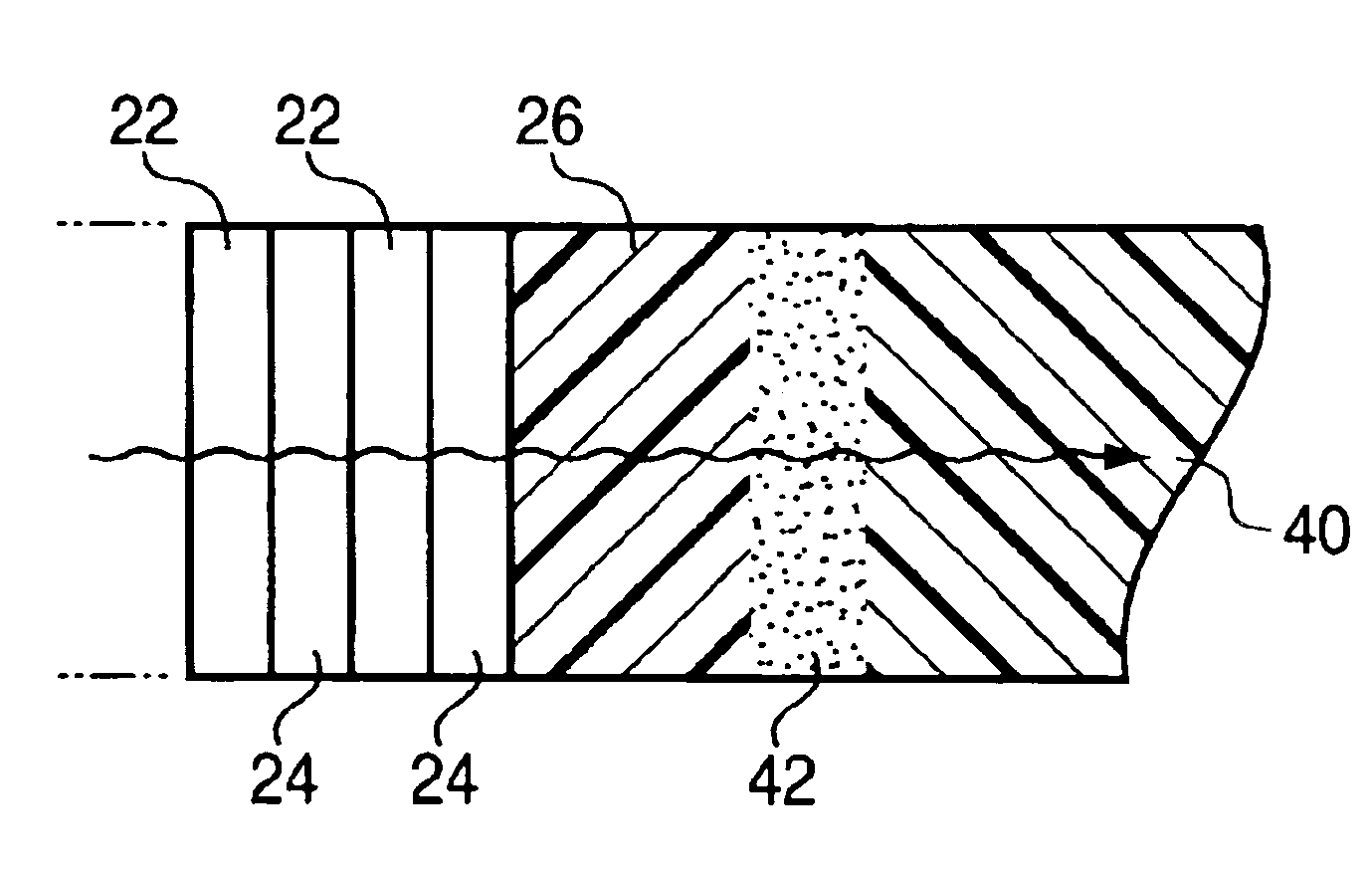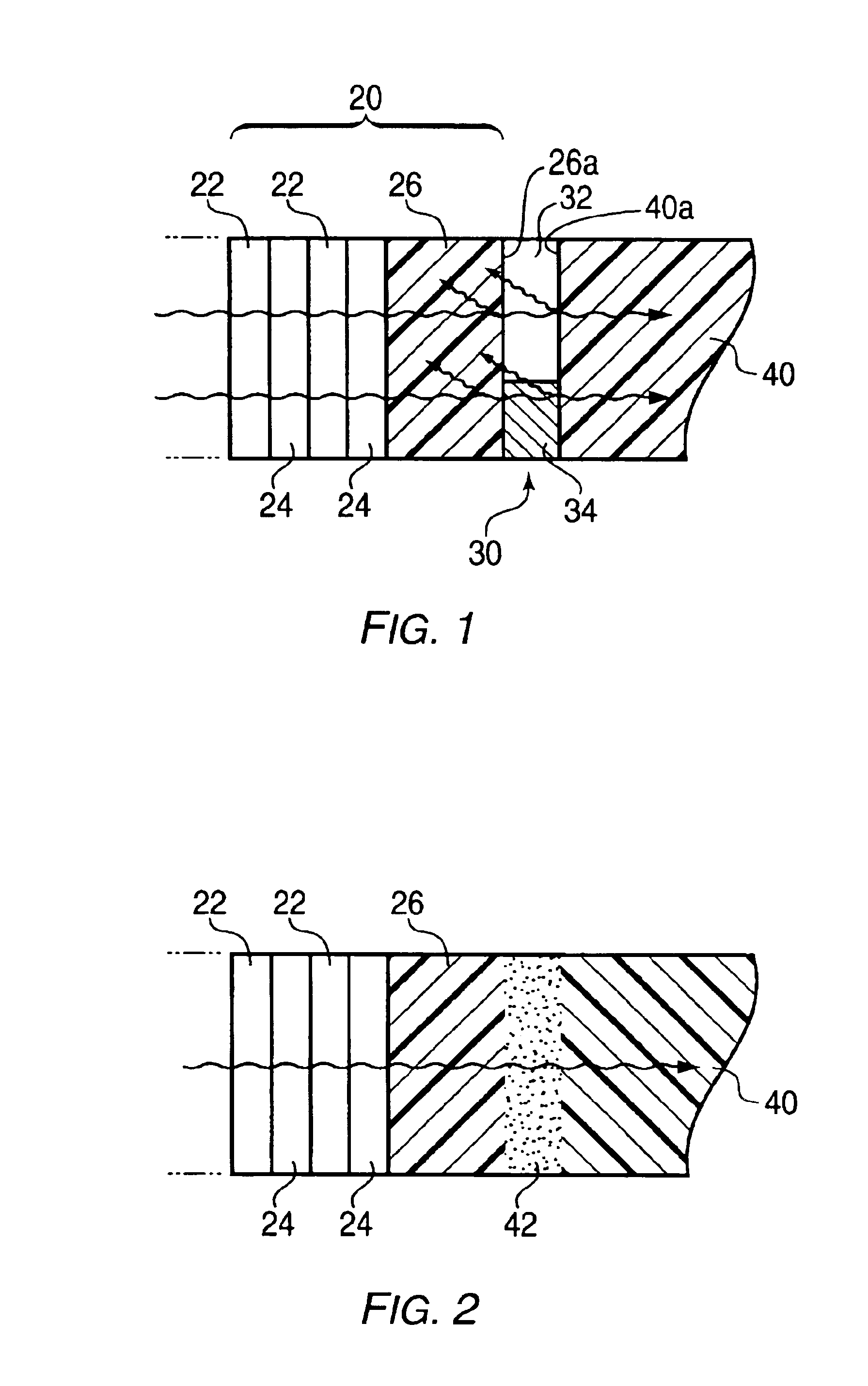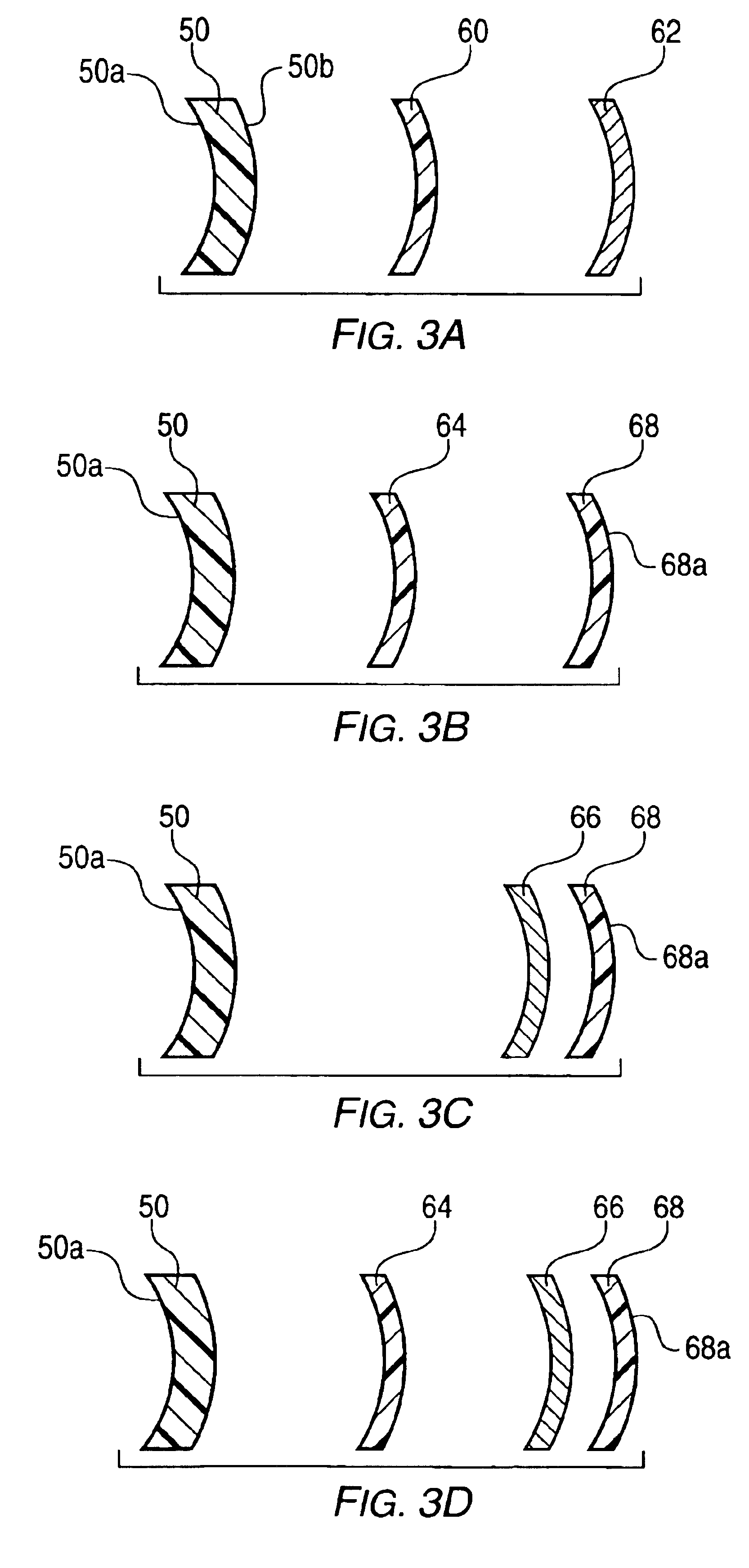Substrate mounting for organic, dielectric, optical film
a dielectric and organic technology, applied in the field of substrate mounting for organic dielectric and optical films, can solve the problems of inconvenient manufacturing, inability to meet the requirements of optical coupling films, and inability to achieve the effect of improving optical transmission
- Summary
- Abstract
- Description
- Claims
- Application Information
AI Technical Summary
Benefits of technology
Problems solved by technology
Method used
Image
Examples
Embodiment Construction
[0025]In U.S. Pat. No. 5,882,774 films are stacked together to improve transmission spectra. For example, a pair of 204-layer polarizers made from alternating layers of PEN and coPEN are laminated together. More specifically, the outer coPEN layer on one polarizer is laminated to the outer coPEN layer of the other polarizer. In this instance, an optical adhesive is used: wherein the only important property of the adhesive is that it possesses a refractive index as close to the coPEN as possible. In other instances a relatively thick skin layer is formed on the exterior surface of the film. In the above example, the skin layer would be formed from PEN or coPEN. In any event, the skin layer is made from one of the polymers used in the film.
[0026]As can be seen in FIG. 1, a problem exists in layering a film 20 onto a substrate 40. For example, coupling a film 20 made from alternating layers 22, 24 of PEN and coPEN (or PEN and PMMA) to a substrate 40 having different mechanical, chemica...
PUM
| Property | Measurement | Unit |
|---|---|---|
| wavelengths | aaaaa | aaaaa |
| visible wavelengths | aaaaa | aaaaa |
| integrated transmission properties | aaaaa | aaaaa |
Abstract
Description
Claims
Application Information
 Login to View More
Login to View More - R&D
- Intellectual Property
- Life Sciences
- Materials
- Tech Scout
- Unparalleled Data Quality
- Higher Quality Content
- 60% Fewer Hallucinations
Browse by: Latest US Patents, China's latest patents, Technical Efficacy Thesaurus, Application Domain, Technology Topic, Popular Technical Reports.
© 2025 PatSnap. All rights reserved.Legal|Privacy policy|Modern Slavery Act Transparency Statement|Sitemap|About US| Contact US: help@patsnap.com



